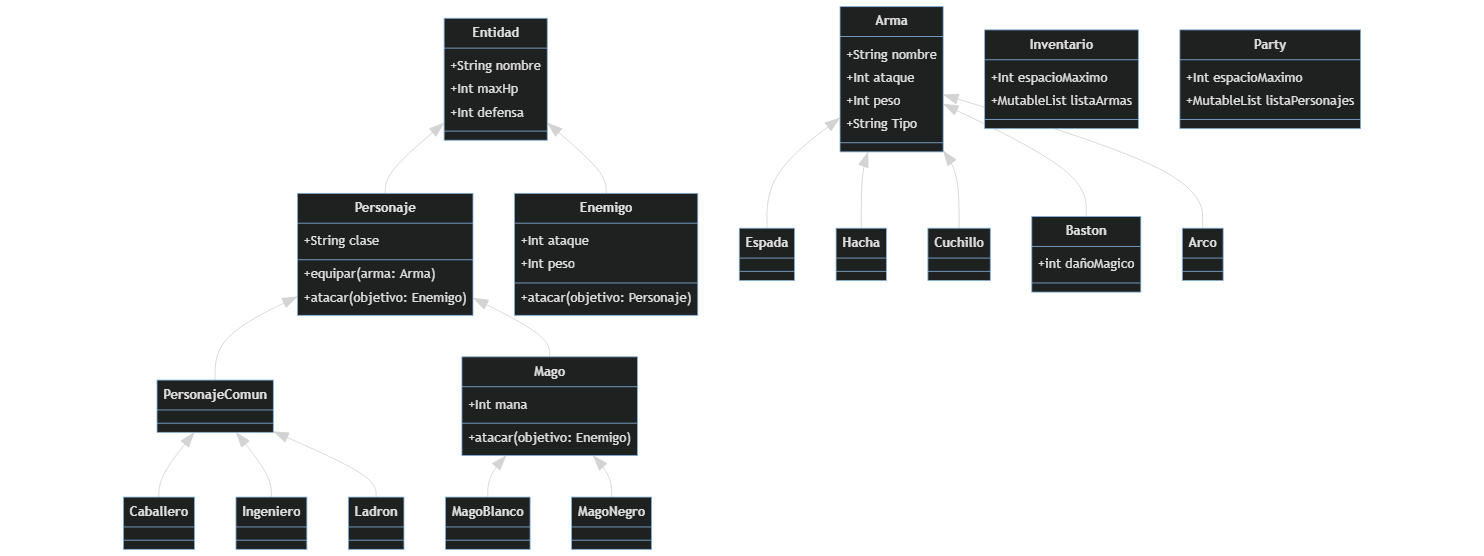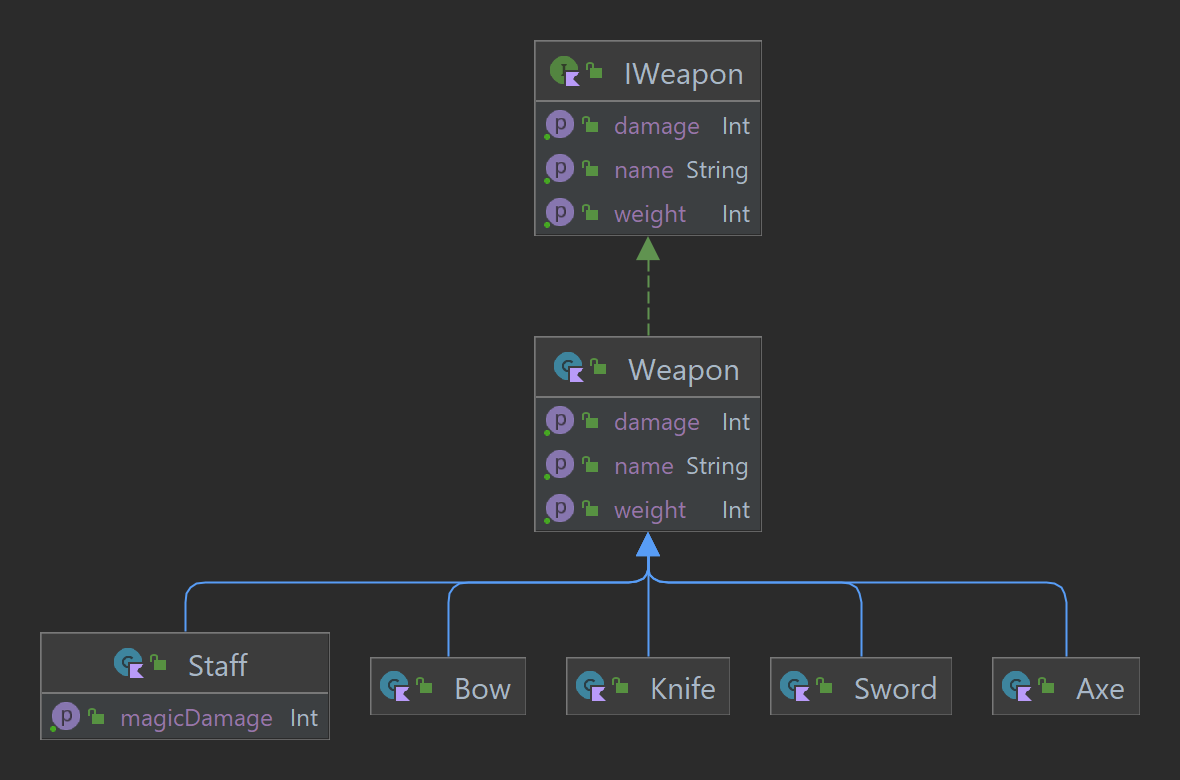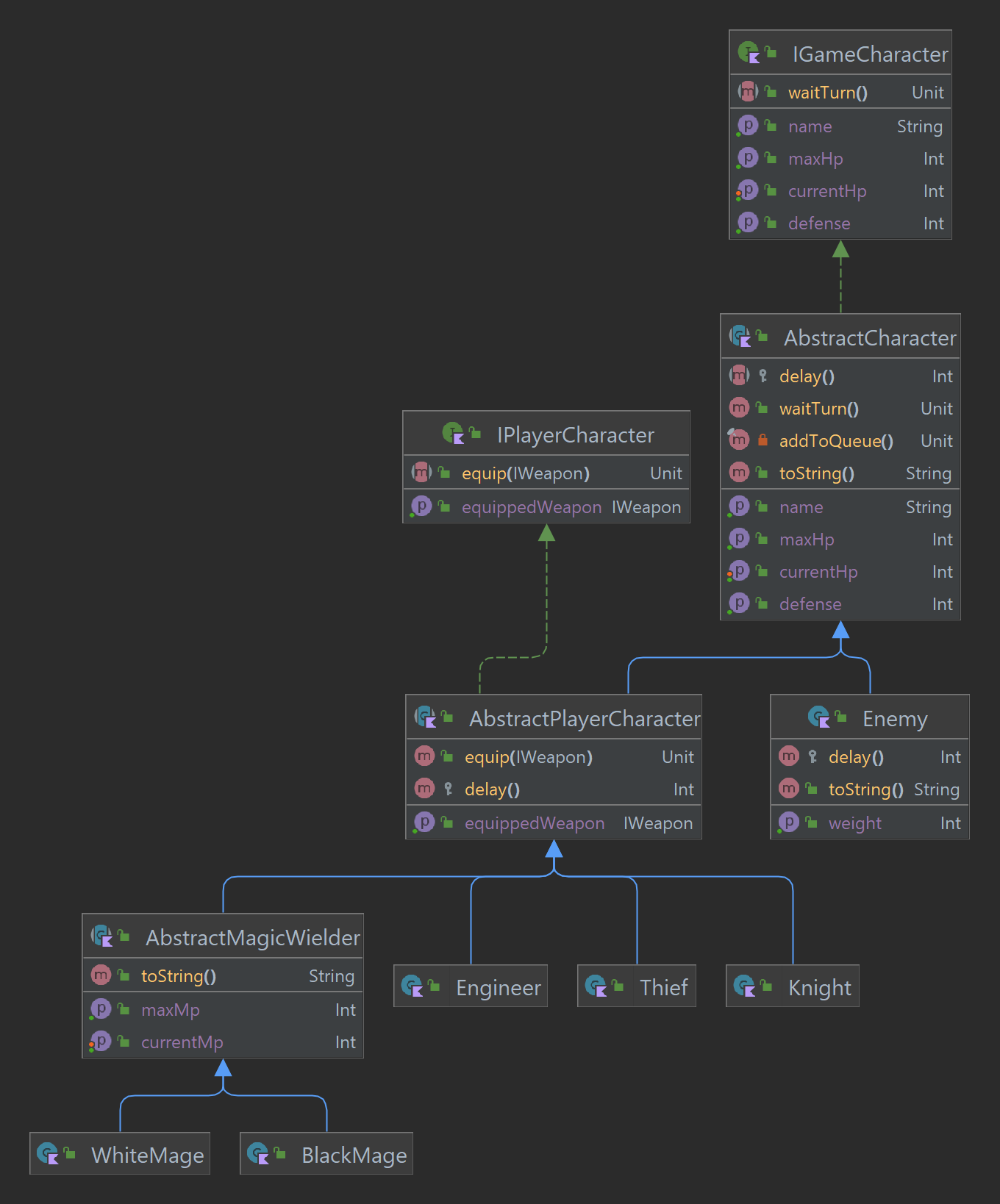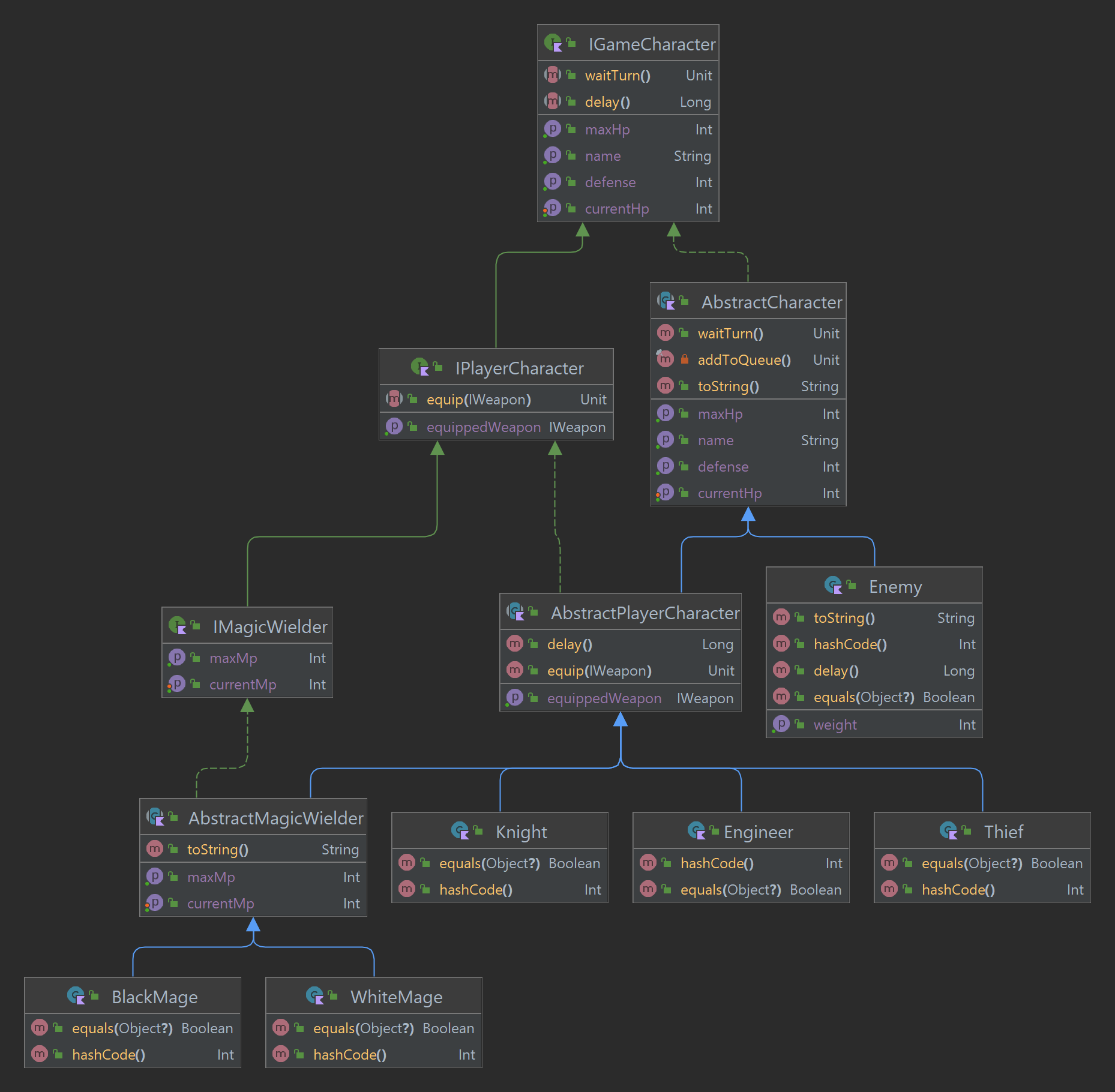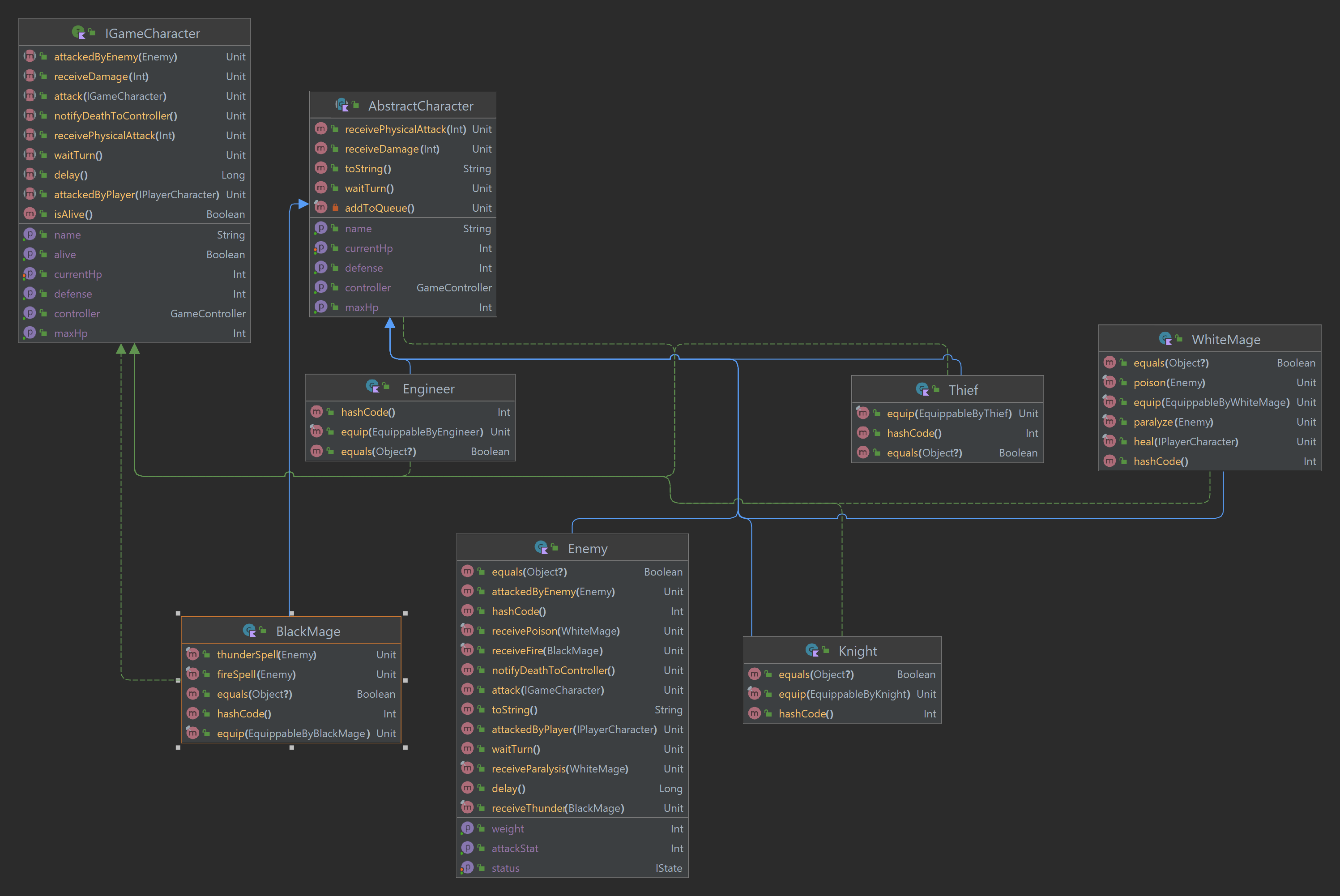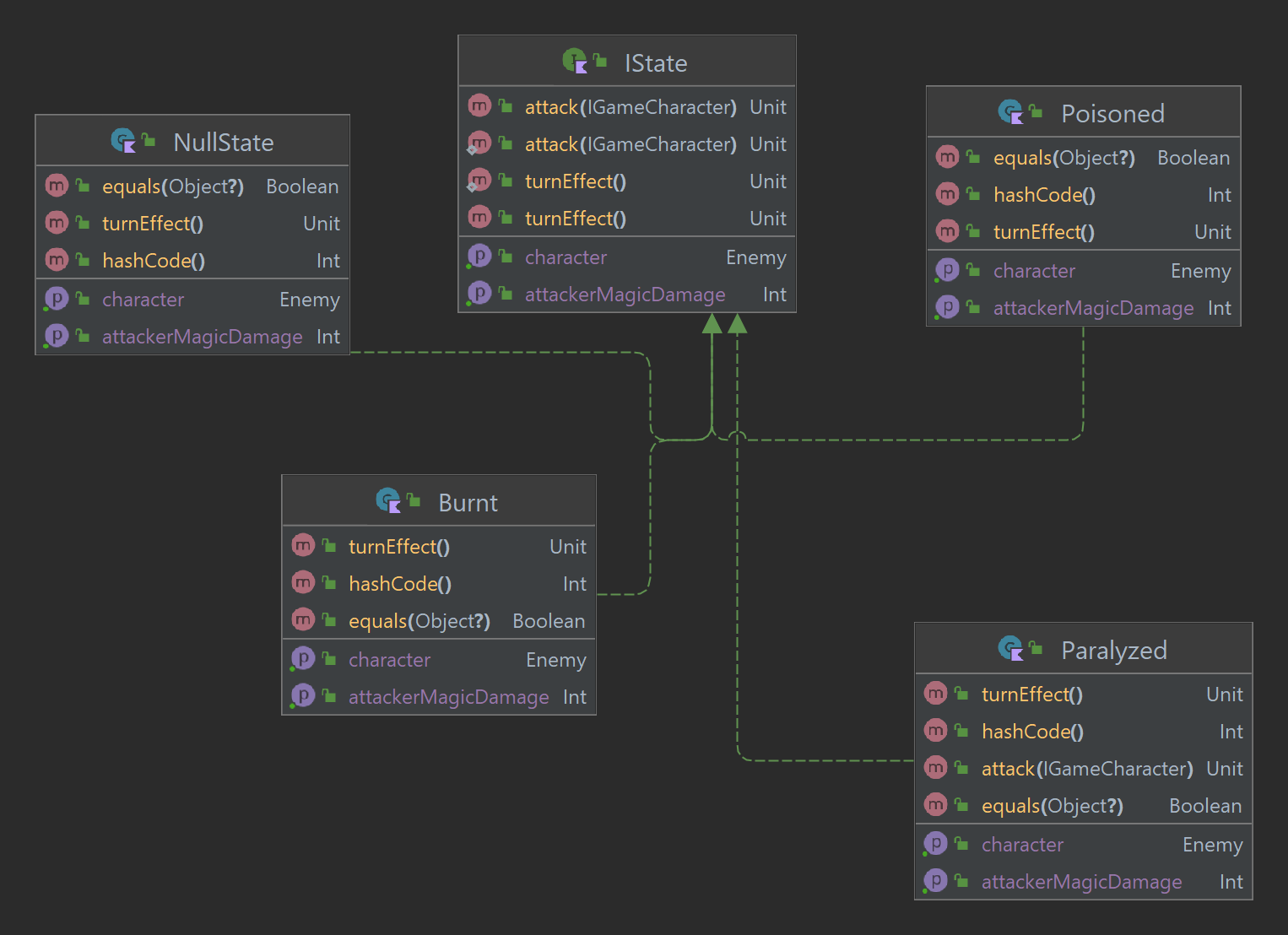This work is licensed under a Creative Commons Attribution 4.0 International License
This project's goal is to create a (simplified) clone of Final Fantasy's combat, a game developed by Square Enix Broadly speaking for the combat the player has a group of characters to control and a group of enemies controlled by the computer.
We were asked to create a UML diagram given the problem specification (without the base code from this repo). I created this one (in Spanish):
We are asked to study the base code from this repository (in master), find design problems and fix them. When looking at the differences between the UML diagrams, I noticed that:
MagesandBlack Magesmay be generalized by anAbstractMagicWielder. This has been added to reduce future code duplication.- It is necessary to model
Staffsin a different way from other weapons, because the wielder shouldn't have to check what it has equipped to do spells. Thus, every weapon has been added as its own class to avoid future violations of encapsulation.
Also, the abstract method moveTurn violates the Dependency Inversion Principle because it depends on specific implementations of the abstract class. Thus, we create the delay abstract method, which is implemented by Enemy and AbstractPlayerCharacter, and is then used by moveTurn.
Finally, I did some small refactoring:
- Modify
toStringmethods in child classes to reuse the code from parents. - Rename interfaces to have an
Iprefix. PlayerCharacter.ktis split into more files such that each class has a unique file.
With the changes from the previous partial homework, we have the following UML diagrams:
At this point, we implement tests for every class with JUnit, reaching 99% test coverage. These are all available in the test/kotlin/ directory, where you can verify 100% passed.
When doing this, I noticed a few improvements to the character modelling, such as:
- The
delaymethod is now public and a part of theIGameCharacterinterface IPlayerCharacternow inherits fromIGameCharacter- Create the
IMagicWielderinterface, which inherits fromIPlayerCharacter, and is implemented byAbstractMagicWielder
Giving us the updated UML diagram:
We are asked to implement restrictions to which weapons can be equipped to a character.
To do this, the equip method of the AbstractPlayerCharacter takes an IWeapon parameter and throws an UnequippableWeaponException exception.
Then, each character of type X overloads the equip method to take a weapon which implements the EquippableByX interface, and properly equips it.
This guarantees that only the correct weapons can be equipped to a character, while playerCharacter.equip(weapon) always compiles.
All new features have been tested in the test/kotlin/ directory, holding still 99% test coverage. The updated UML diagram is:
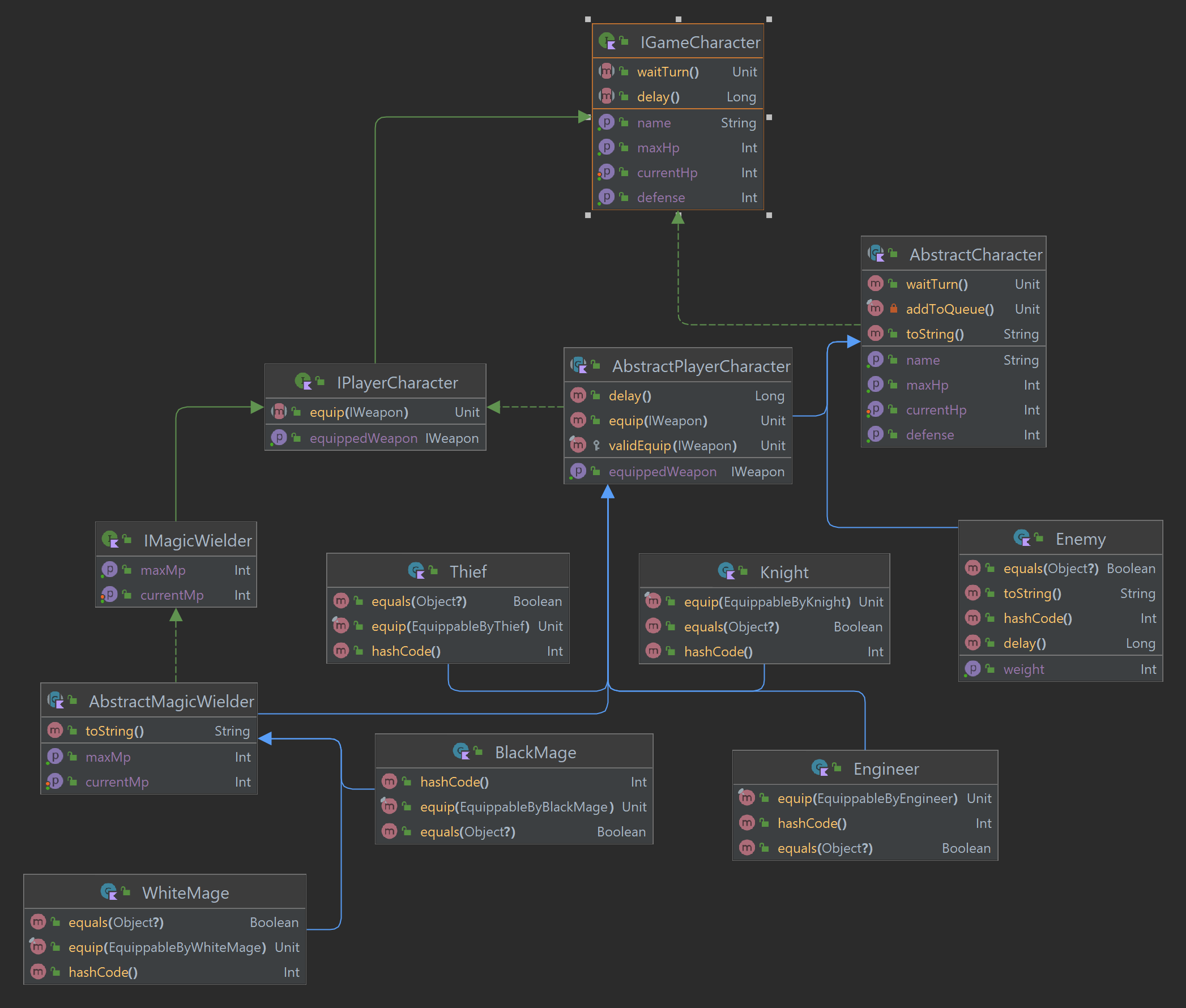
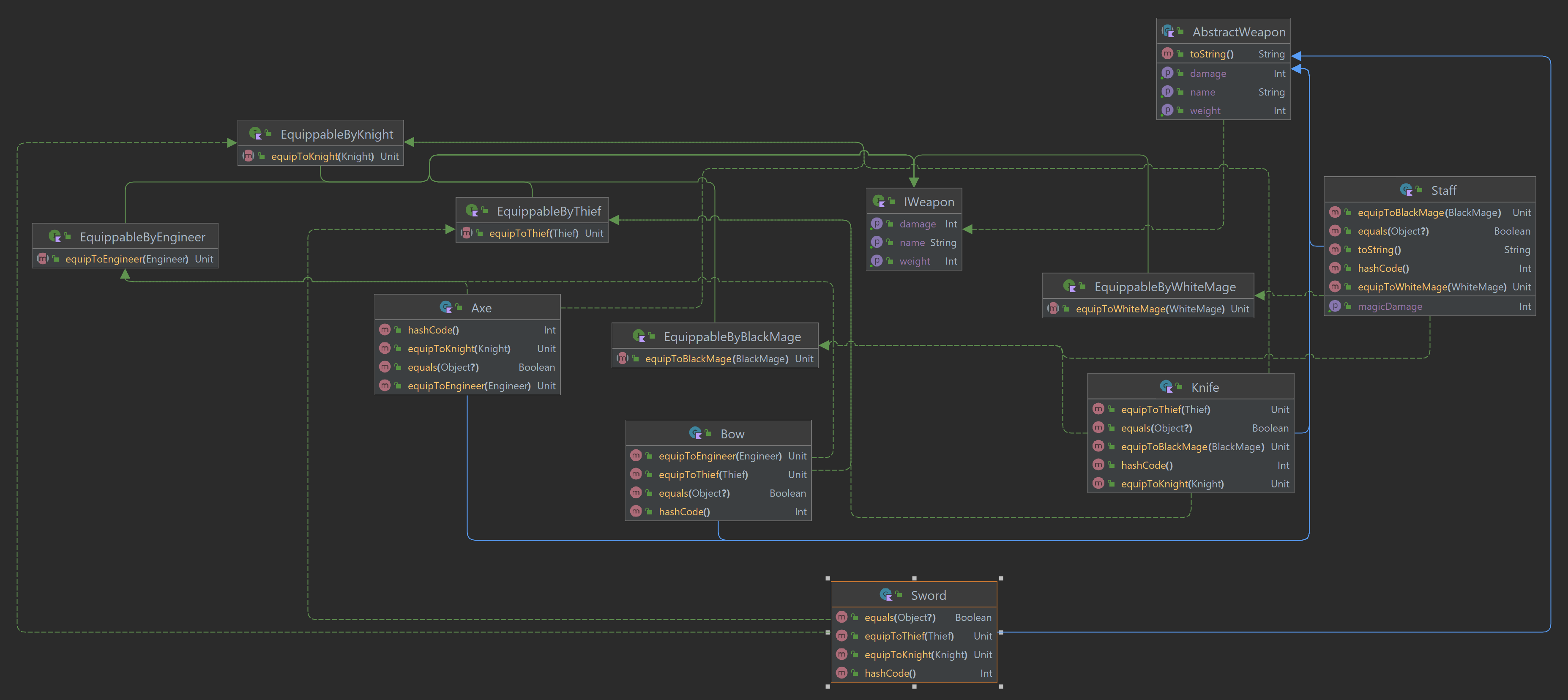
Nothing is added, as the requirements are met from the partial versions.
I did not do anything apart from the first partial homework, as I was not able to finish it in time. Only what was implemented will be shown here.
We are asked to implement the controller class GameController, which is the class that interacts with the models.
It is responsible for:
- Handling the queue for the turns of the characters
- Handling the list of all living characters, both enemies and players
- Creating the characters, weapons and enemies
- Telling a character to attack or cast a spell targeting another character
- Telling an enemy to attack a random player character
In order to do this, the controller must know when characters die, to remove them from the queue and the list of living characters.
To do this, we implement an Observer pattern, where the GameController is the observer, and the IGameCharacter is the subject.
When a character dies, it notifies the controller, which removes the character from the queue and the list of living characters.
Note that the GameController could also be a singleton, but I decided to make it a normal class to avoid coupling.
It also determines victory (resp. loss) conditions for the player, by checking if the list of alive enemies (resp. players) is empty.
To make magicians cast spells, we added new methods. Black mages can cast fire and thunder spells,
while white mages can cast cure, paralyze and poison spells.
This is done with double dispatch, where the spell receiver implement receiveX(magicWielder) method for each castX(enemy) the magic wielder implements.
For attacks, the receiver is an Enemy, whereas for the healing spell, the receiver is a PlayerCharacter.
Spells can't be used if the wielder doesn't have enough mana, a SpellFailedException is thrown if attempted. It can't target dead enemies either, but that will be handled by the controller. Mages are able to use spells when not wielding a staff, but their magicDamage attribute is set to 0, meaning they cannot inflict damage, but can inflict a status or heal an ally.
For thunder, fire and poison spells, we need to implement status effects (paralyze, poison and burn).
These are implemented as States, where the Enemy is the context, and the status effect is the state.
The enemy has a status field, which is an implementation of IState, and every turn, the enemy calls status.turnEffect to apply the effect of the status.
It also calls status.attack every time the enemy attacks, to apply damage reductions or cancellations (for example, if the enemy is paralyzed, it cannot attack).
To deal with enemies without a status, we create a Null Object pattern, where the NullState is the null object, and the Enemy has a NullState as a status by default.
For every method, we have tests in the test/kotlin/ directory, holding 95% test coverage. The updated UML diagram is:
Weapons did not change significantly, other than the addition of a magicDamage attribute defaulted to 0 for non-staffs.

